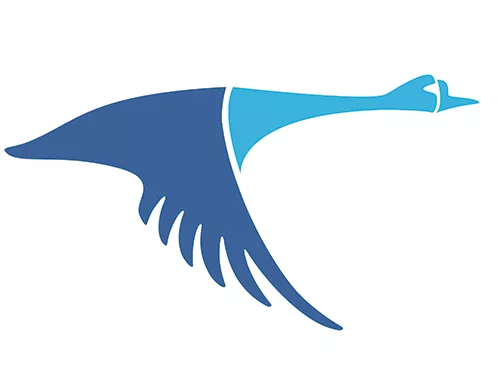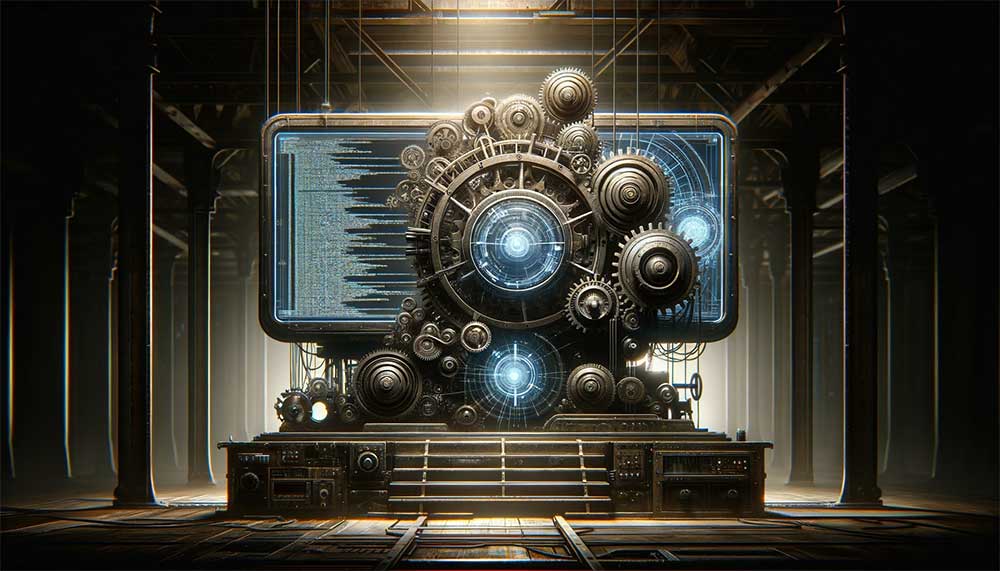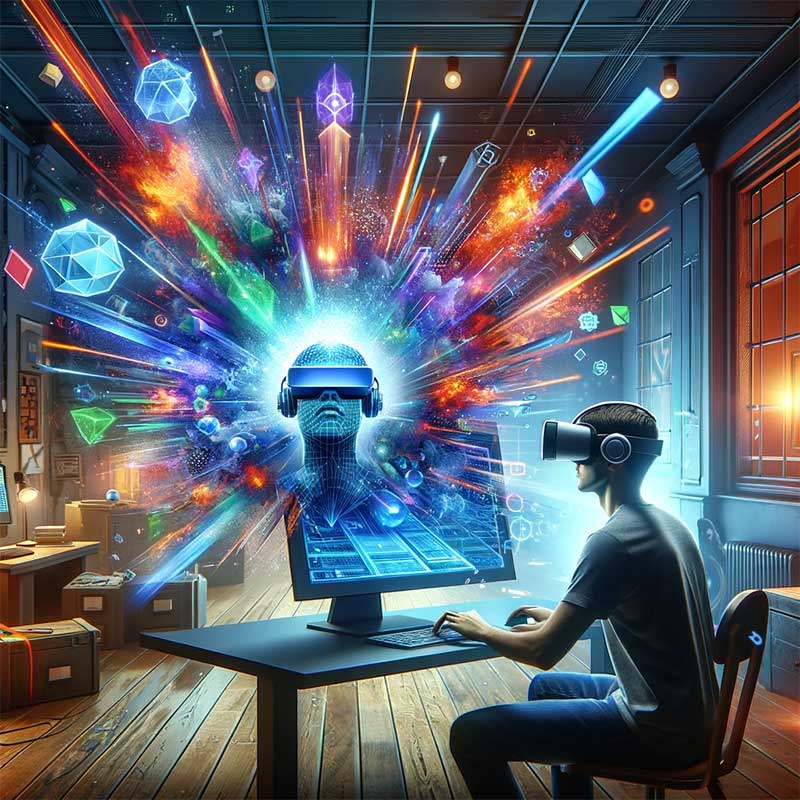What is Modern Web Development? Key Concepts and Technologies
Embarking on the journey of modern web development and design is like exploring a digital jungle bursting with evolving technologies and ever-shifting design trends.
All those shiny tools that you want to have but may not need!
Gone are the days when web pages were static entities, displaying text and images as digital flyers. Today’s web is a vibrant display, weaving aesthetics, functionality, and user experience into a seamless whole.
This dynamic world has its roots in the early days of the Internet when websites were little more than text-based pages navigated through hyperlinks. It was a simpler time, akin to the digital equivalent of cave paintings.
But as technology advanced, so did the complexity and capabilities of web design. The introduction of CSS and JavaScript brought about a renaissance in web design, transforming these digital canvases into interactive experiences.
In the modern era, web development and design are about presenting information and creating engaging digital environments. These environments are tailored to catch the eye and provide intuitive, user-centric experiences.
As we delve deeper into this article, we’ll explore how this transformation unfolded, revealing the marvels of modern web development and design. This field continues to evolve at the speed of thought.
What is Modern Web Development?
Modern web development is the art and science of building and maintaining dynamic, interactive, and user-friendly websites and web applications that set you apart from competitors in today’s diverse digital landscape. It goes far beyond simply writing static HTML pages; it encompasses a complex ecosystem of technologies, methodologies, and best practices to deliver seamless experiences across many devices and platforms.
From Static Pages to Dynamic Experiences
The metamorphosis of web design from static pages to dynamic experiences is nothing short of a digital odyssey. In the early stages of the Internet, web design was much like a digital Stone Age – primitive, with web pages resembling text-heavy brochures lying inert on the screen. These rudimentary sites, coded in basic HTML, were the Internet’s first baby steps, charming in their simplicity but limited in scope and interaction.
As technology marched forward, so did the ambitions of web designers. The introduction of Cascading Style Sheets (CSS) was akin to the discovery of fire in this digital evolution. It brought a newfound ability to style and layout web pages with artistic flair – a leap from monochromatic text to a kaleidoscope of colors, fonts, and layouts.
This was closely followed by JavaScript, which breathed life into web pages with interactive elements and animations, turning them from static posters into engaging, dynamic experiences.
This era marked the birth of web design as we know it today – a blend of art and science. Websites transformed into interactive platforms capable of presenting information and engaging users in an immersive experience.
Web design’s evolution has been propelled by users’ increasing desire for information and experience—a trend that continues to shape the digital landscape. As we journey through this evolution, we witness a field that has grown beyond mere aesthetics, embracing interactivity and user experience as its core tenets.
Modern web development is driven by the need for:
- Responsiveness: Websites that adapt flawlessly to different screen sizes and devices, from massive desktop monitors to tiny smartphone screens.
- Interactivity: With engaging user experiences powered by dynamic content, animations, and real-time updates, page builders can make the experience more pleasurable for customers and developers.
- Performance: Fast loading times and efficient resource utilization to keep users engaged and satisfied.
- Scalability: Architecting applications that can handle increasing user loads and data without compromising performance.
- Maintainability: Writing clean, well-structured, and modular code that is easy to understand, update, and debug.
- Security: Implementing robust security measures to protect user data and prevent malicious attacks.
Front-End Technologies: Shaping the User Interface
Front-end technologies are the virtuosos of the web development symphony, orchestrating the visual and interactive elements that define our digital experiences.
They are the chisels in the hands of modern web artisans, shaping the user interface into something that is not just functional but also delightful and intuitive.
At the heart of this artistry lies HTML5, the sturdy canvas upon which the web is built. It’s like the foundation of a house, essential and structurally vital. CSS3, with its aesthetic finesse, then comes in like an interior designer, draping the HTML canvas in vibrant colors, elegant fonts, and responsive layouts. This duo has transformed websites from information repositories into visually stunning and engaging platforms.

Are you interested in maximizing your online growth? We can help with Web Strategy, Web Design and development, SEO, and content writing. Talk to Us! Call: (857)400-8959
Enter JavaScript, the wizard of the front-end world. Like a puppet master, it adds motion and interactivity to the web’s tapestry, allowing elements on the page to dance to the users’ tune. Along with its powerful frameworks like React, Angular, and Vue.js, JavaScript has revolutionized how we interact with web interfaces. These frameworks are akin to the avant-garde movements in art – pushing boundaries and redefining what’s possible.
These technologies have elevated web design from static pages to dynamic, responsive, and interactive masterpieces. They are the tools that allow designers to create not just a website but a web experience, crafting interfaces that are beautiful and deeply resonant with the user’s needs and expectations.
In this digital age, front-end technologies are the bridge between the user and the digital world, continually evolving to create more seamless, engaging, and intuitive experiences.
But wait, there’s more.
Enter the Website Page Builders
Revolutionizing Web Design Ease and Efficiency. Amidst the intricate world of HTML and CSS that shapes our web experiences, page builders have emerged as game-changers. One standout tool is Beaver Builder, a user-friendly WordPress page builder. It’s designed for both beginners and professionals, streamlining web development without needing deep coding knowledge.
Beaver Builder offers a drag-and-drop interface, allowing effortless customization of web layouts. This tool not only simplifies the design process but also maintains high standards of responsiveness and style. For those looking to enhance their web-creation journey, Beaver Builder stands as a powerful ally.”
Back-End Development: The Engine Behind the Screen

Back-end development is a website’s unseen powerhouse, much like a mighty ship’s engine room. It’s where the magic happens – code turns into action, data flows like a river, and servers do their tireless dance of request and response. This hidden realm is the backbone of any web application, powering the functionalities that front-end technologies so elegantly display.
At the core of back-end development lies a plethora of programming languages – from the robustness of Java and the versatility of Python to the ubiquity of PHP. Each language acts like a different genre of fuel, propelling the engine in unique ways. Equally important are databases, such as SQL and NoSQL, which act like the memory banks of this digital engine, storing and retrieving data with precision and efficiency.
This realm is not just about writing code; it’s about creating the logic and infrastructure that enable websites to be more than static pages. It’s a world where algorithms meet data, performance and security are paramount, and the ultimate goal is to provide a seamless, uninterrupted user experience. Back-end development is indeed the unsung hero of the web world, humming quietly but powerfully behind the scenes.
Performance: Fast Loading Times and Efficient Resource Utilization for User Engagement
Website performance is critically important to user engagement and overall success. Users have come to expect near-instantaneous loading times, and any delay can lead to frustration, abandonment, and a negative perception of your brand. People are impatient. Fast loading times and efficient resource utilization are not just technical niceties but critical elements of a positive user experience that directly impact key business metrics.
The Cost of Slowness: Statistics You Can’t Ignore
Several studies highlight the significant impact of slow loading times on user behavior:
- Bounce Rate: According to a Google study, as page load time increases from 1 second to 3 seconds, the probability of a bounce (a user leaving the site after viewing only one page) increases by 32%. This figure jumps to a staggering 90% when the load time reaches 5 seconds.
- Conversion Rates: Research indicates a direct correlation between page speed and conversion rates. WP Rocket cites a study showing that a website that loads in 1 second has an e-commerce conversion rate 2.5 times higher than a site that loads in 5 seconds.
- User Satisfaction: BrowserStack reports that every 1-second delay in page response can decrease user satisfaction by 16%. Furthermore, 64% of dissatisfied shoppers will unlikely revisit a slow website.
- Mobile Impact: Given the prevalence of mobile browsing, speed is even more critical on mobile devices. Google and Ipsos found that for every one-second delay in mobile page load time, conversions can fall by up to 20%.
- Perceived Speed vs. Reality: Interestingly, users often perceive load times as being 15% slower than they are, and when recalling the experience, they remember them as 35% slower (SpeedCurve). This highlights the psychological impact of even slight delays.
Efficient Resource Utilization: The Key to Speed
Achieving fast loading times requires careful management and optimization of the resources your website uses. This includes:
- Optimized Images: Large, uncompressed images are a major culprit for slow loading times. It is crucial to use appropriate file formats (like WebP where supported), compress images without significant loss of quality, and use responsive images for different screen sizes.
- Minified Code: Reducing the size of HTML, CSS, and JavaScript files by removing unnecessary characters (whitespace, comments) can significantly improve loading speed.
- Efficient Caching: Implementing browser caching allows returning visitors’ browsers to store copies of static files (like images and style sheets), reducing the need to reload them on subsequent visits.
- Content Delivery Networks (CDNs): Distributing your website’s content across multiple servers geographically closer to users can significantly reduce latency and improve loading times for visitors worldwide.
- Minimized HTTP Requests: Each element on your webpage (images, scripts, and style sheets) requires a separate HTTP request. Reducing the number of these requests by combining files (where appropriate) can speed up loading.
- Asynchronous Loading: Ensuring that non-critical scripts and resources load after the main content has rendered can improve the perceived loading speed and user experience.
- Efficient Server Response Time: Your web server’s speed plays a critical role. Choosing a reliable hosting provider and optimizing your server-side code and database queries are essential.
In Conclusion:
In modern web development, performance is not optional but a basic requirement for engaging and keeping your viewers engaged. By prioritizing fast loading times and efficient resource utilization, you can significantly improve user experience, reduce bounce rates, and boost conversion rates. Do not overlook this critical step, or you will pay the price.
SEO and Accessibility: Essential Aspects of Modern Web Practices
In the digital arena, SEO (Search Engine Optimization) and web accessibility are not just buzzwords; they are fundamental pillars that uphold the efficacy and inclusivity of modern web practices. Together, they ensure a website is not only discoverable but also usable by a diverse audience.

SEO is akin to a lighthouse, guiding the vast sea of internet users to your digital shores. It involves a myriad of strategies, from keyword optimization to crafting engaging content, all aimed at pleasing the ever-evolving algorithms of search engines.
This digital art form ensures your website doesn’t just exist in the vast web universe but shines brightly on the search engine results pages.
Parallel to SEO is the crucial aspect of web accessibility. Imagine it as the process of building ramps alongside stairs on your website. It involves designing your site to be navigable and understandable by everyone, including people with disabilities. This includes screen reader compatibility, keyboard navigation, and explicit content organization.
Are you interested in maximizing your online growth? We can help with Web Strategy, Web Design and development, SEO, and content writing. Talk to Us! Call: (857)400-8959

Together, SEO and accessibility form a harmonious duo. They ensure your website is visible to search engines and welcoming to all users, regardless of their abilities or how they access the web. In today’s digital world, these practices are not just about ticking boxes but about building an equitable, efficient, and honest web for everyone.
However, both SEO and accessibility require ongoing maintenance. It’s not a one-time build; let it go. So keep that in mind. Feel free to contact us if you would like to discuss either SEO or accessibility on your website.
Good SEO practices can play a significant role if you sell products via an e-commerce website. Remember that product or service reviews can help immensely in terms of credibility, which leads to more sales and ranking online.
Understanding modern web development technologies
The future of web development and design looms like a promising dawn, heralding an era brimming with innovative trends and groundbreaking technologies. As we venture into this future, we anticipate a digital landscape where the boundaries between reality and virtuality blur, thanks to advancements like
Augmented Reality (AR) and Virtual Reality (VR) are set to transform websites into immersive experiences far beyond today’s flat screens.

Artificial Intelligence (AI) and Machine Learning (ML) are poised to revolutionize web development further. Imagine AI-driven design tools that can predict user preferences and create personalized experiences or ML algorithms that optimize website performance in real time. These are not just futuristic fantasies but imminent realities.
Another burgeoning trend is the increasing importance of cybersecurity in web development. As the web becomes more integral to our lives, protecting data and ensuring privacy will become paramount.
In this fast-evolving domain, staying ahead means embracing these emerging trends and technologies. The future of web development and design is a canvas of limitless possibilities, waiting to be painted with the brush of innovation.
Conclusion: Future Landscape of Web Development and Design
In summary, the journey through modern web development and design is an exhilarating expedition through a landscape of constant evolution and innovation. The field has transformed remarkably from the early days of static web pages to today’s dynamic, user-centric experiences.
The confluence of front-end and back-end technologies has created an intricate tapestry of functionality and aesthetic appeal. At the same time, the critical roles of SEO and accessibility ensure that these digital creations are both visible and usable to a diverse audience.
Emerging trends like AI, AR/VR, and a heightened focus on cybersecurity are set to push the boundaries even further.
Stay connected
We’re always hard at work putting out new content covering WordPress, marketing, and SEO news. Stay connected with us 100% spam FREE.
We hope that you enjoy our content. If you decide to make a purchase after clicking on one of our affiliate links, we’ll earn a small commission at no extra cost to you. Thanks for reading! View our Affiliate Disclosure


This was such an interesting read! I love how you walked us through the evolution of web development—from simple text-based pages to the interactive, visually-rich experiences we see today. It’s amazing to think about how far we’ve come with tools like CSS and JavaScript!
I’m curious, as web design continues to evolve, do you think there are any emerging trends or technologies that businesses should be paying attention to in 2024 and beyond? Would love to hear your thoughts!
Thanks for sharing such an insightful piece!
Good question, and too many to list here. But here are a few.
1. Artificial Intelligence Integration The rapid advancement of AI is transforming business operations across industries. Companies should particularly focus on:
Generative AI for content creation, code generation, and design
AI-powered automation for routine tasks and customer service
Predictive analytics for business intelligence and decision-making
Machine learning for personalization and process optimization
2. Sustainability and Environmental Impact Environmental consciousness is becoming a business imperative:
Growing demand for sustainable products and services
Carbon footprint tracking and reduction initiatives
Circular economy business models
3. ESG (Environmental, Social, Governance) reporting requirements
Digital Privacy and Security With increasing cyber threats and regulatory requirements:
Zero-trust security architectures
Enhanced data protection measures
Compliance with evolving data protection regulations
4. Web3 and Decentralized Technologies While still evolving, businesses should monitor:
Blockchain applications beyond cryptocurrency
Digital identity management
Customer Experience Technologies Enhanced focus on seamless customer interactions:
Omnichannel presence and integration
Voice and conversational interfaces
This article beautifully captures the evolution and future of web development, blending technology with creativity. Excited to see how AI and AR/VR shape this dynamic field!
Your blog beautifully captures the essence of modern web development and design as an ever-evolving journey. The vivid analogies—like CSS as the ‘discovery of fire’ and JavaScript as a ‘puppet master’—make the complex history of web technologies engaging and relatable. I also appreciate the emphasis on inclusivity through accessibility and the exciting potential of emerging trends like AI and AR/VR. This holistic perspective reminds us that web development isn’t just about aesthetics or functionality—it’s about creating meaningful, accessible, and secure experiences for everyone. Looking forward to more insights from your journey.
Your blog captures the vibrant evolution of web development and design perfectly! I love how you painted the journey from static pages to dynamic, user-focused experiences—it highlights the art and science behind modern websites. The comparison of CSS to the discovery of fire and JavaScript breathing life into web pages is spot on! The section on front-end technologies beautifully showcases the collaborative magic of HTML5, CSS3, and JavaScript. Such a compelling read!
Your article captures the vibrant evolution of development and design perfectly!
Keep up the great work! Thank you so much for sharing a great post.
Your blog beautifully captures the evolution of web development — from static pages to dynamic, user-focused experiences. I love the analogy of CSS as fire and JavaScript breathing life into web pages — it perfectly highlights the balance of creativity and technology. The section on front-end technologies also showcases the powerful synergy between HTML5, CSS3, and JavaScript. A fantastic read!
Love this journey through modern web development! It’s great how the post traces the evolution—from static HTML/CSS to today’s dynamic, API-driven SPAs and PWAs. The focus on integrating AI, enhancing accessibility, and emphasizing performance really hits home. It cleverly blends technical depth with big-picture vision. A crisp, inspiring read for any dev looking to stay ahead. Kudos, Slocum Studio!